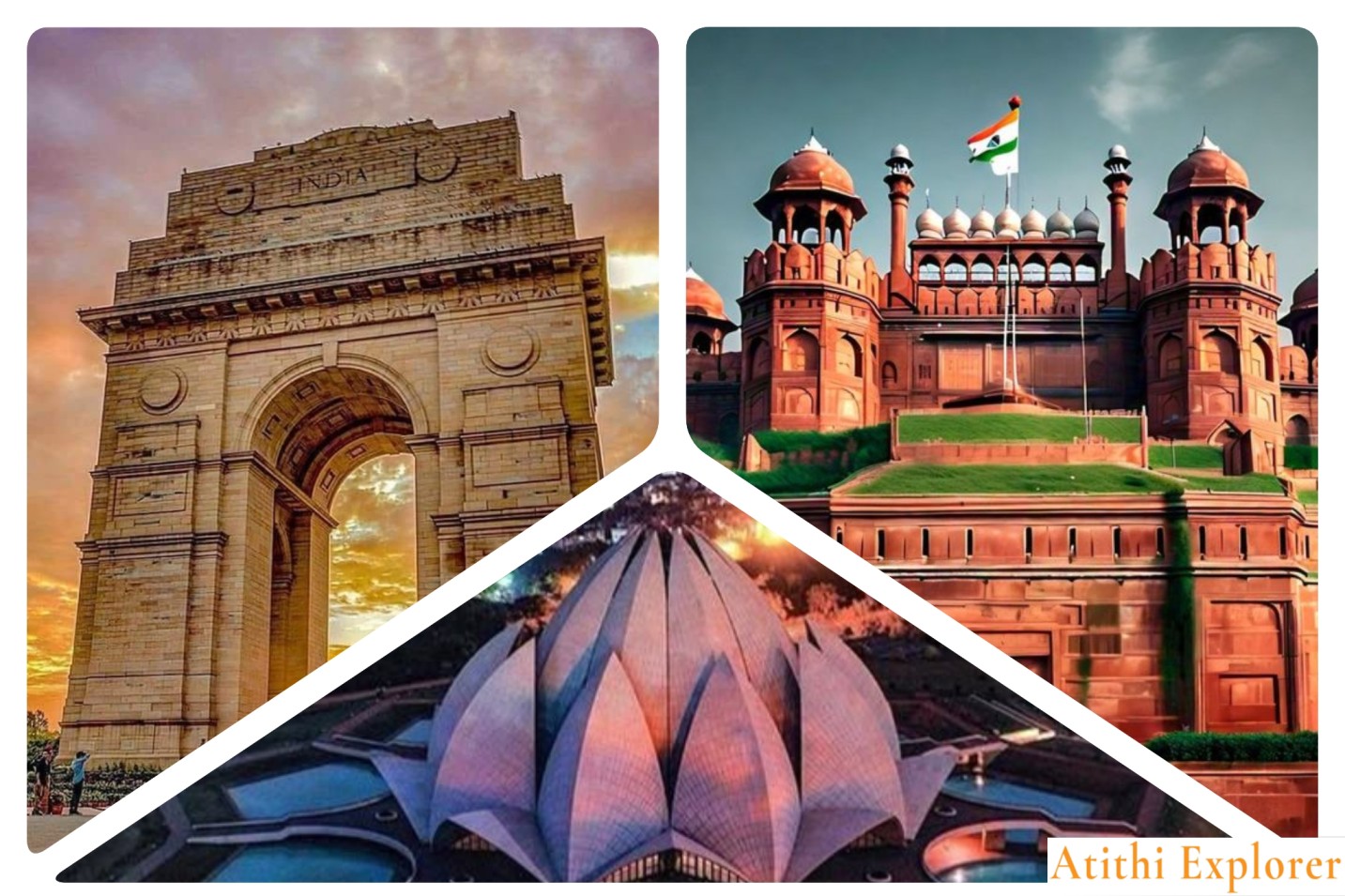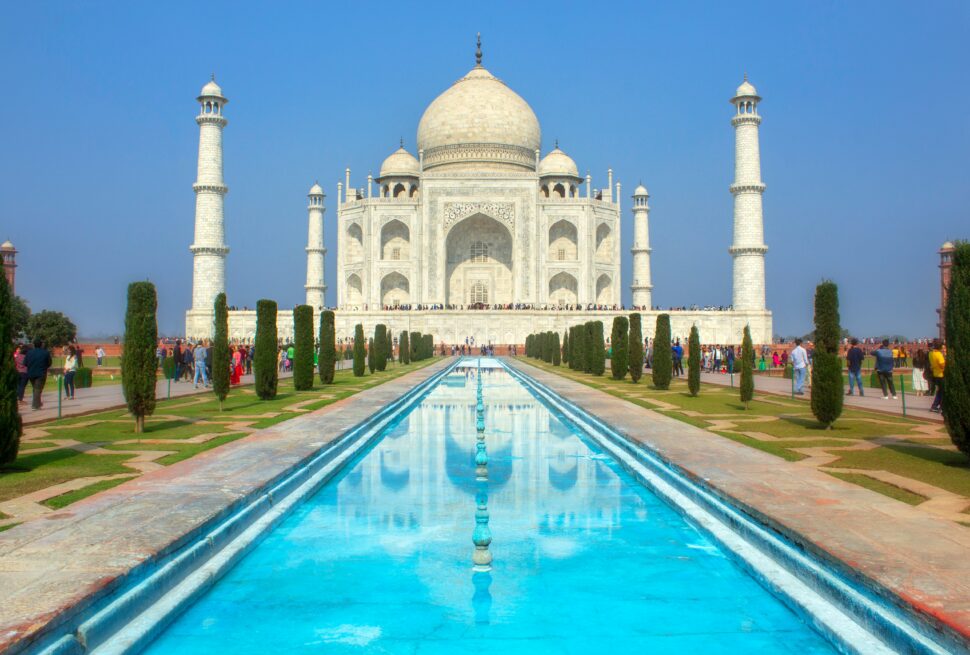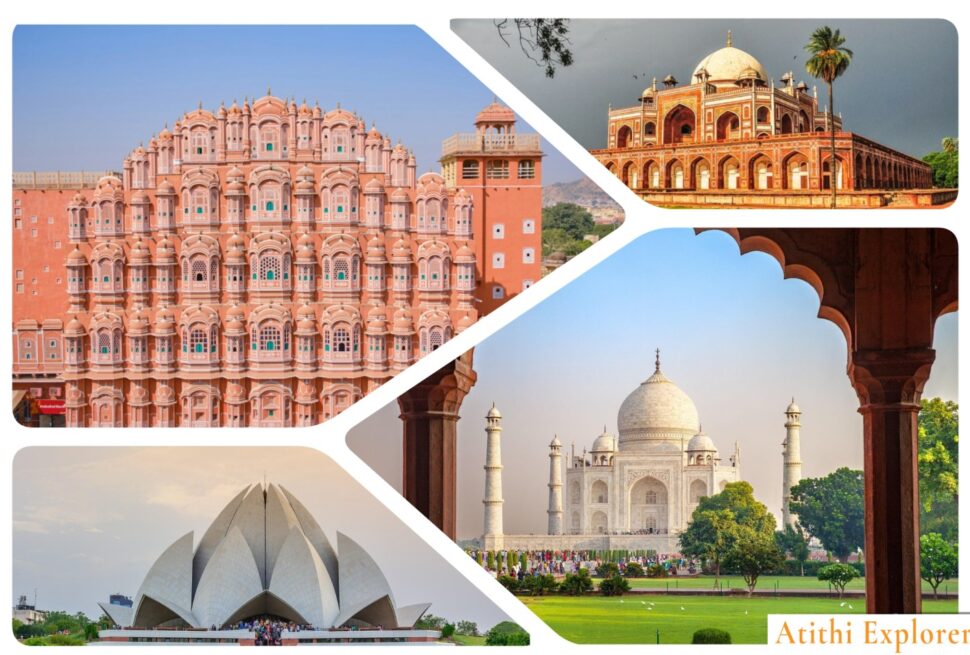Delhi, the heart and soul of India, is a treasure trove of historical splendor. For first-time visitors, it offers an unparalleled journey through centuries of empires, cultures, and architectural marvels. From the mighty Mughal bastions to awe-inspiring British colonial buildings, Delhi’s landscape is dotted with monuments that narrate stories of grandeur, revolution, and resilience.
In this guide, we uncover the top 10 must-see monuments in Delhi, perfect for anyone visiting the city for the first time. Each of these structures not only stands as a symbol of Delhi’s rich heritage but also provides a window into India’s glorious past.
1. Red Fort (Lal Qila)
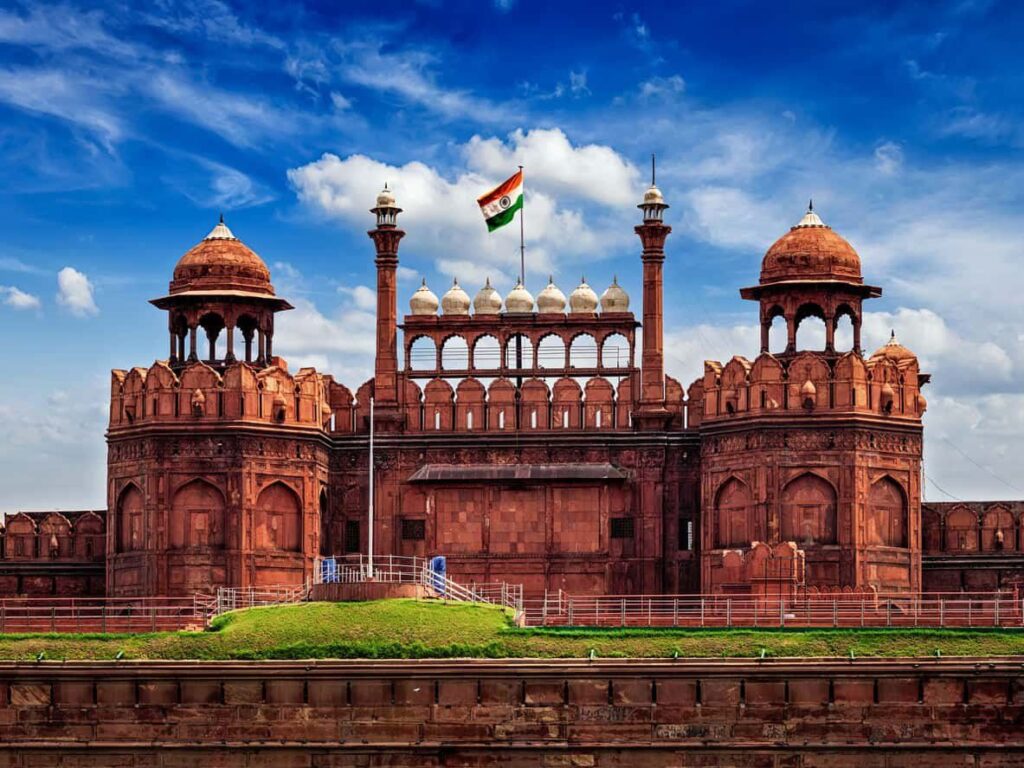
Location: Chandni Chowk, Old Delhi
Entry Fee: ₹35 (Indians), ₹500 (Foreigners)
Timings: 9:30 AM to 4:30 PM, Closed on Mondays
The Red Fort, a UNESCO World Heritage Site, stands as a proud symbol of India’s sovereignty. Built by Emperor Shah Jahan in 1648, this magnificent red sandstone fortification once served as the main residence of the Mughal emperors for over 200 years.
Inside the fort, explore Diwan-i-Aam (Hall of Public Audience), Diwan-i-Khas (Hall of Private Audience), the Rang Mahal, and the grand Lahori Gate. The fort’s architecture reflects a fusion of Persian, Timurid, and Indian styles, evoking awe in every corner.
Why Visit?
The annual Independence Day speech by the Prime Minister is delivered from its ramparts. Visiting here connects you to the essence of India’s freedom struggle.
2. Qutub Minar
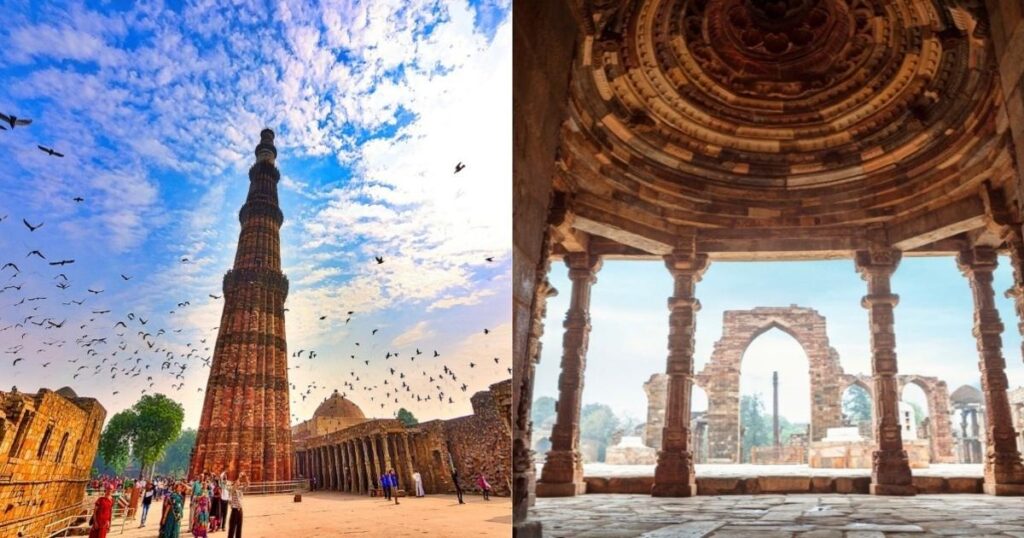
Location: Mehrauli
Entry Fee: ₹30 (Indians), ₹500 (Foreigners)
Timings: Sunrise to Sunset
A towering masterpiece of Indo-Islamic architecture, Qutub Minar is a 73-meter-high minaret that dominates Delhi’s skyline. Commissioned by Qutb-ud-din Aibak in 1193, it was later completed by his successors. This UNESCO site is the tallest brick minaret in the world.
Within the Qutub complex lies the Iron Pillar, renowned for its rust-resistant composition. The intricate carvings and Quranic inscriptions on the Minar make it a favorite among art and history lovers.
Why Visit?
Qutub Minar is a symbol of victory and Delhi’s Islamic roots. Its unique architecture and historical backdrop make it a must-visit.
3. Humayun’s Tomb
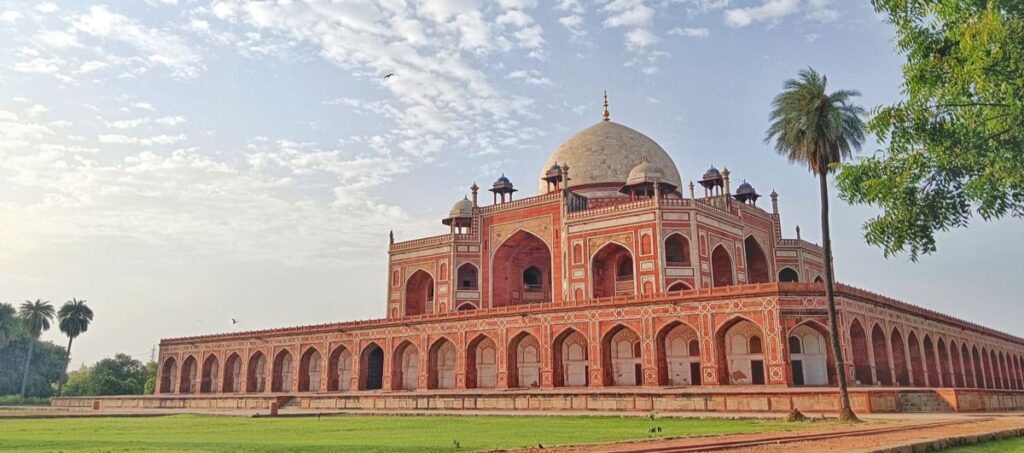
Location: Nizamuddin East
Entry Fee: ₹35 (Indians), ₹500 (Foreigners)
Timings: 6:00 AM to 6:00 PM
A precursor to the Taj Mahal, Humayun’s Tomb is one of the finest examples of Mughal architecture. Commissioned by Empress Bega Begum in memory of Emperor Humayun, this tomb is set amidst sprawling Persian-style gardens (Char Bagh layout).
It marks the first time red sandstone was used extensively in a Mughal structure. The site is incredibly photogenic, especially at sunrise and sunset.
Why Visit?
Humayun’s Tomb is peaceful, romantic, and historically rich. It beautifully bridges the architectural evolution from Persian tombs to the Taj Mahal.
4. India Gate
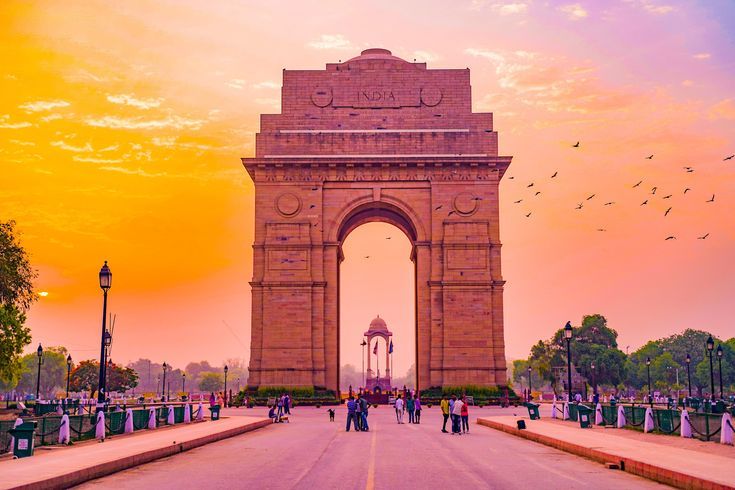
Location: Rajpath (Now Kartavya Path)
Entry Fee: Free
Timings: Open 24 Hours
The India Gate is not just a war memorial but also a tribute to over 70,000 Indian soldiers who died in World War I. Designed by Sir Edwin Lutyens and inspired by the Arc de Triomphe in Paris, it is surrounded by lush lawns and illuminated brilliantly in the evening.
The Amar Jawan Jyoti, an eternal flame, was added post-Independence as a mark of respect to soldiers who sacrificed their lives.
Why Visit?
India Gate is Delhi’s most iconic structure and a place of reflection and patriotism. It’s perfect for an evening stroll or picnic.
5. Jama Masjid
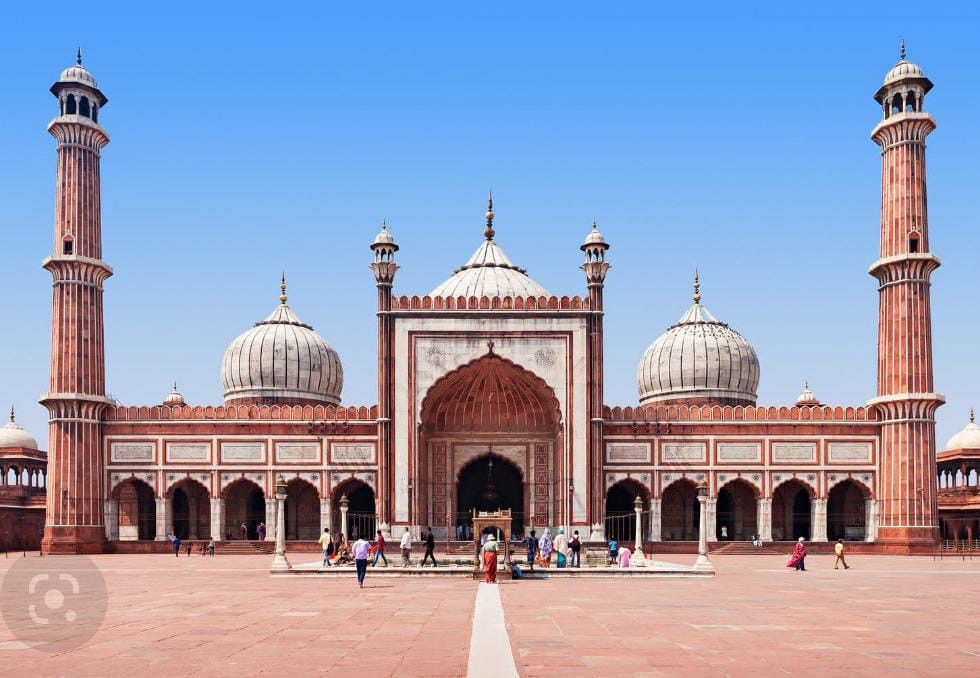
Location: Old Delhi, near Chandni Chowk
Entry Fee: Free (₹300 if taking photos)
Timings: 7:00 AM to Noon & 1:30 PM to 6:30 PM
Jama Masjid, India’s largest mosque, was built by Shah Jahan in 1656. It can hold 25,000 devotees at a time. Its white marble domes and minarets offer a stunning view of Old Delhi when climbed.
The mosque has three grand gates, four towers, and two minarets standing 40 meters tall. Non-Muslim tourists are welcome outside prayer times, and modest clothing is mandatory.
Why Visit?
This mosque exudes spiritual energy and offers unmatched views of the bustling lanes of Old Delhi.
Place Map or Infographic Here
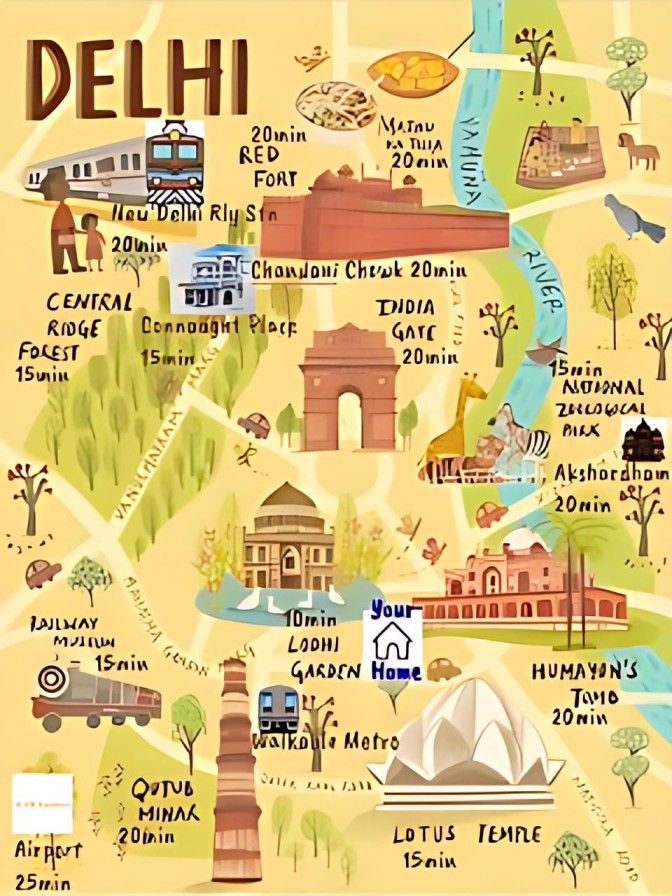
6. Lotus Temple
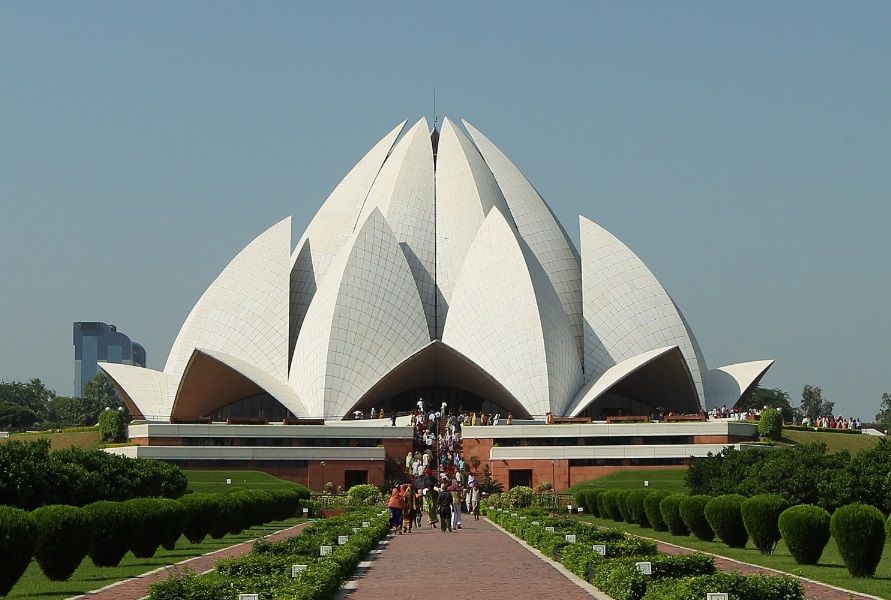
Location: Kalkaji, South Delhi
Entry Fee: Free
Timings: 9:00 AM to 5:00 PM (Closed on Mondays)
Known for its flower-like structure, the Lotus Temple is a Baháʼí House of Worship that promotes unity among all religions. Built in 1986, its 27 free-standing marble petals form the shape of a lotus flower.
The temple is surrounded by nine pools and expansive gardens, offering peace and tranquility. No rituals or sermons are conducted; it’s a space for silent prayer and meditation.
Why Visit?
It’s not just a monument but an experience in inner peace. The architecture is modern, graceful, and incredibly photogenic.
7. Rashtrapati Bhavan
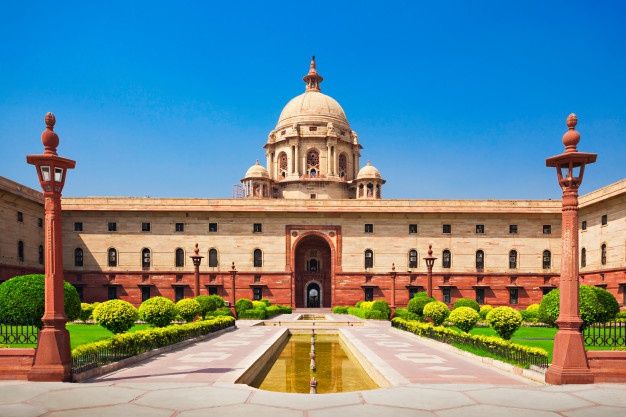
Location: Raisina Hill
Entry Fee: ₹50 (for Gardens), ₹100 (for Museum)
Timings: Fri-Sun, 9 AM to 4 PM (Advance online booking needed)
Rashtrapati Bhavan is the official residence of the President of India and a striking example of colonial architecture. Designed by Sir Edwin Lutyens, it has 340 rooms spread across 320 acres.
The Mughal Gardens, open in spring, are a major highlight. The interiors feature majestic halls, chandeliers, and artwork reflecting Indian heritage.
Why Visit?
To witness the power and elegance of Indian democracy and explore British-era opulence.
8. Purana Qila (Old Fort)
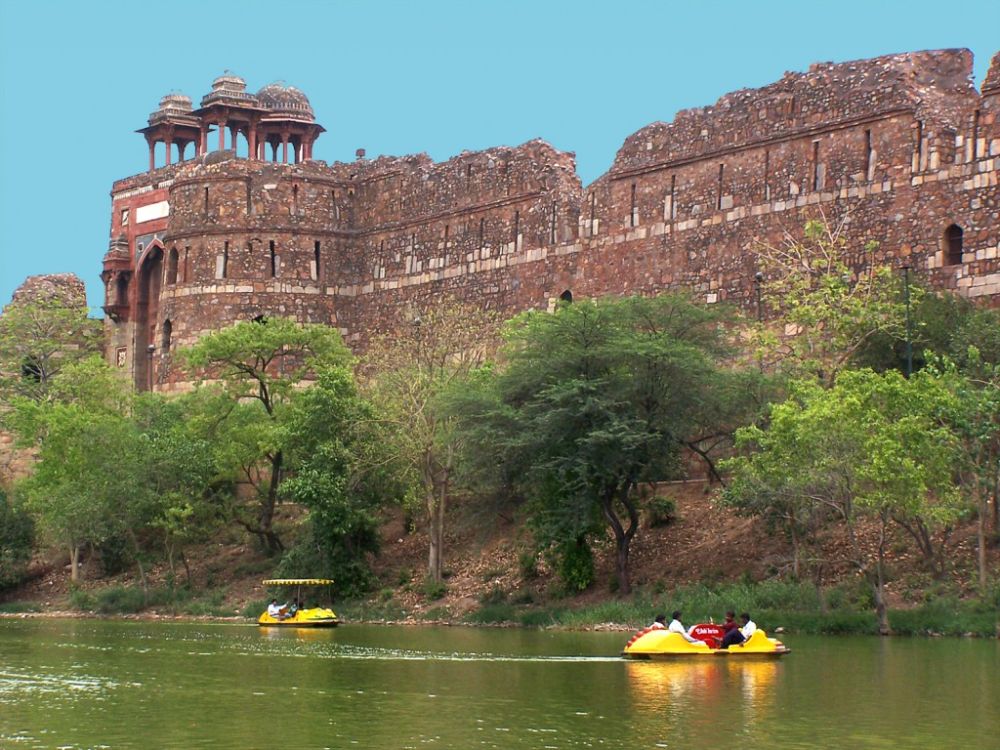
Location: Mathura Road, Near Pragati Maidan
Entry Fee: ₹30 (Indians), ₹500 (Foreigners)
Timings: 7:00 AM to 5:00 PM
Purana Qila, believed to be built on the legendary site of Indraprastha from the Mahabharata, is one of the oldest forts in Delhi. It was later developed by Humayun and Sher Shah Suri.
The serene boating lake, Qila-i-Kuhna mosque, and evening light shows make it a hidden gem. This lesser-known site is perfect for history lovers who seek fewer crowds.
Why Visit?
To walk through legends that date back over 5,000 years and explore a quieter part of Delhi’s heritage.
9. Safdarjung’s Tomb
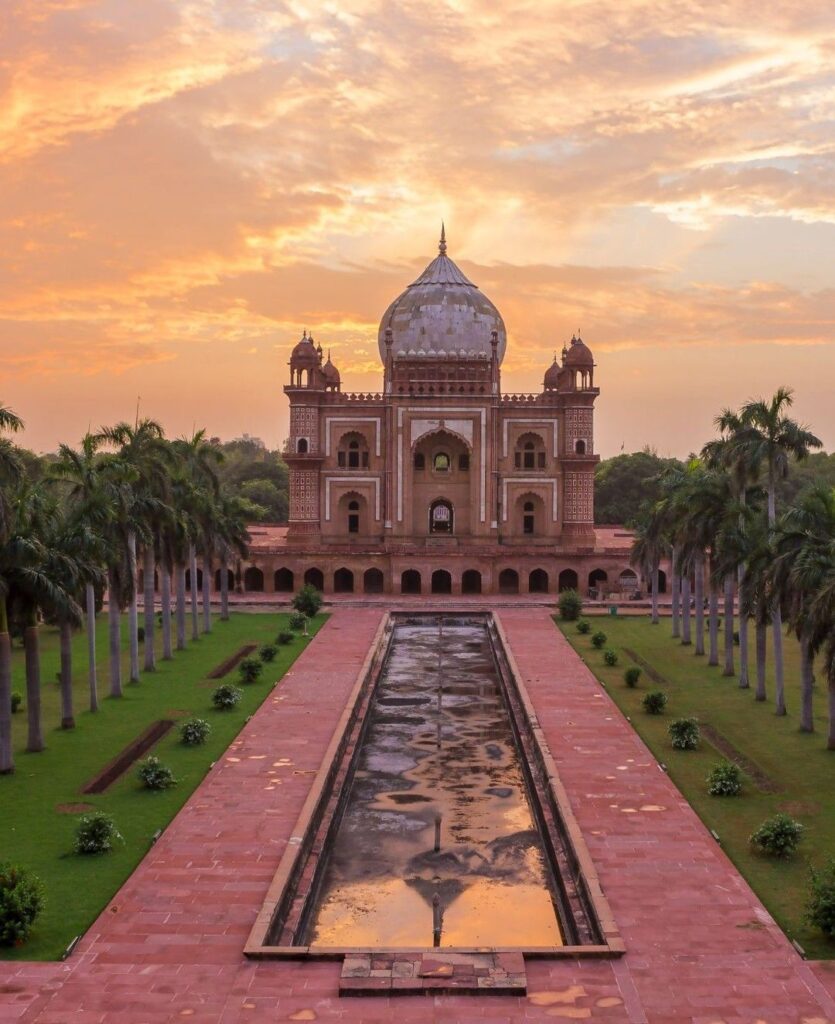
Location: Lodhi Estate, near Jor Bagh
Entry Fee: ₹25 (Indians), ₹300 (Foreigners)
Timings: 7:00 AM to 5:00 PM
Safdarjung’s Tomb, built in 1754, is the last monumental tomb garden of the Mughals. Though not as famous as Humayun’s Tomb, it offers symmetrical Mughal architecture with fewer tourists.
Its domed mausoleum, water channels, and arched gateways resemble Humayun’s Tomb but on a smaller scale.
Why Visit?
A calm and less-crowded spot for photography, history, and a picnic escape within the city.
10. Agrasen Ki Baoli
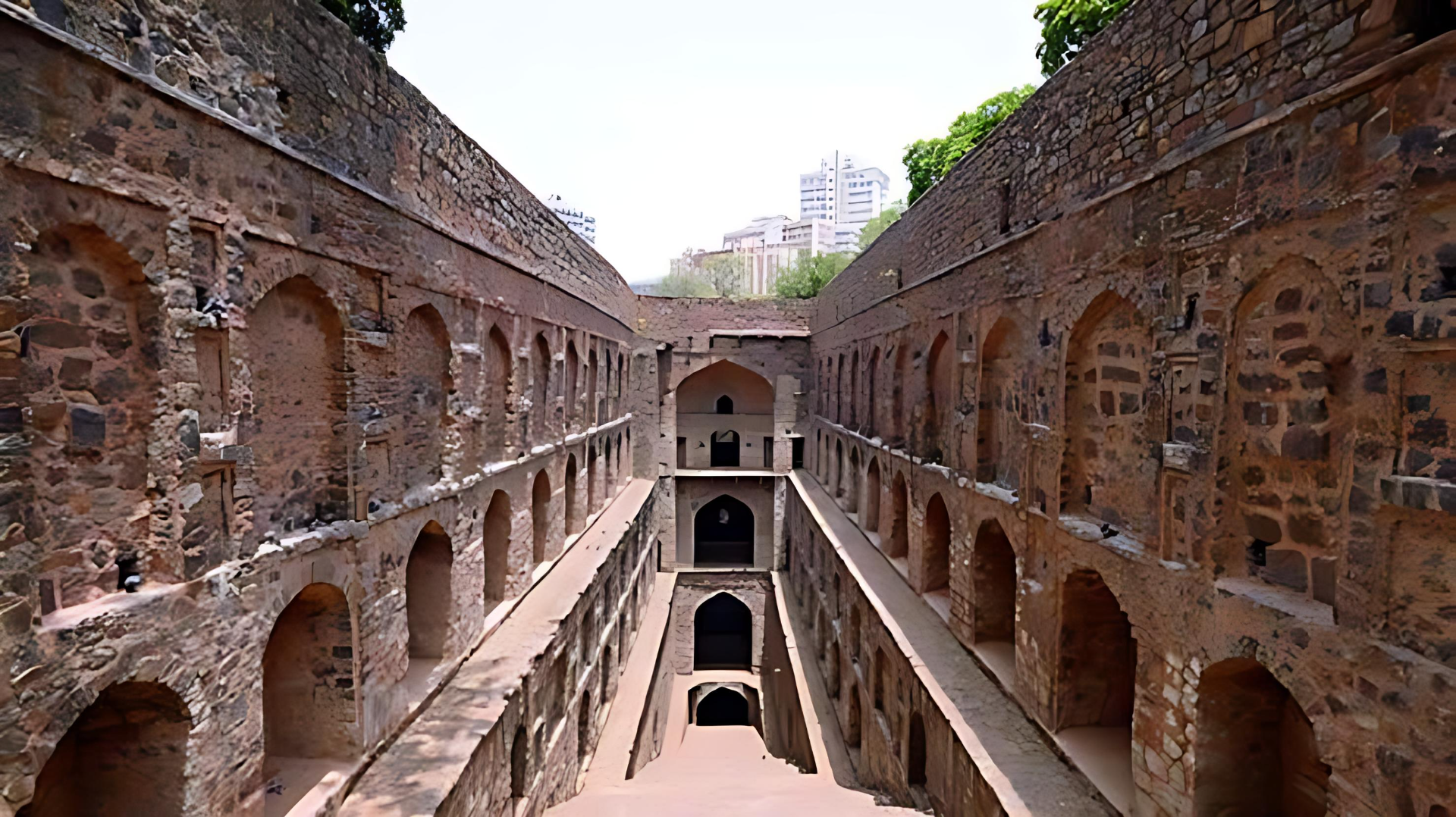
Location: Hailey Road, near Connaught Place
Entry Fee: Free
Timings: 9:00 AM to 5:30 PM
An ancient stepwell in the middle of modern Delhi, Agrasen ki Baoli is a 60-meter-long and 15-meter-wide structure. With 103 steps leading into darkness, it’s cloaked in myth and mystery.
Featured in films like PK and Sultan, it has become a popular Instagram and exploration spot for millennials and tourists alike.
Why Visit?
For its unique atmosphere, acoustics, and a touch of haunted Delhi in a historical package.
Final Tips for First-Time Visitors to Delhi’s Monuments
- Always carry a bottle of water and sun protection, especially from March to October.
- Prefer early mornings for peaceful visits and better photos.
- Wear comfortable walking shoes – you’ll cover a lot on foot.
- Most monuments have nearby metro access – it’s cheap and fast.
- Respect religious sites with modest clothing and quiet behavior.
Suggested Itinerary for Visiting All Monuments in 2 Days
Day 1 (Old Delhi & Central Delhi)
- Morning: Red Fort → Jama Masjid → Chandni Chowk walk
- Afternoon: India Gate → Rashtrapati Bhavan → Agrasen ki Baoli
Day 2 (South Delhi)
- Morning: Qutub Minar → Lotus Temple
- Afternoon: Humayun’s Tomb → Safdarjung’s Tomb → Purana Qila
FAQs: Top Monuments in Delhi
Q1. What is the best time to visit Delhi’s monuments?
October to March is the most pleasant time, with cooler weather ideal for walking.
Q2. Are guides available at these monuments?
Yes, official ASI guides are available, and many offer audio tours or private services.
Q3. Which monument is best for photography?
Humayun’s Tomb, Qutub Minar, and Agrasen Ki Baoli are among the most photogenic.
Q4. Is there an entry fee for all monuments?
Most have a small fee for Indian nationals and a higher fee for foreigners. Many offer combo tickets.
Q5. Are these monuments accessible for differently-abled visitors?
Some monuments like India Gate and Lotus Temple are more accessible than others.
